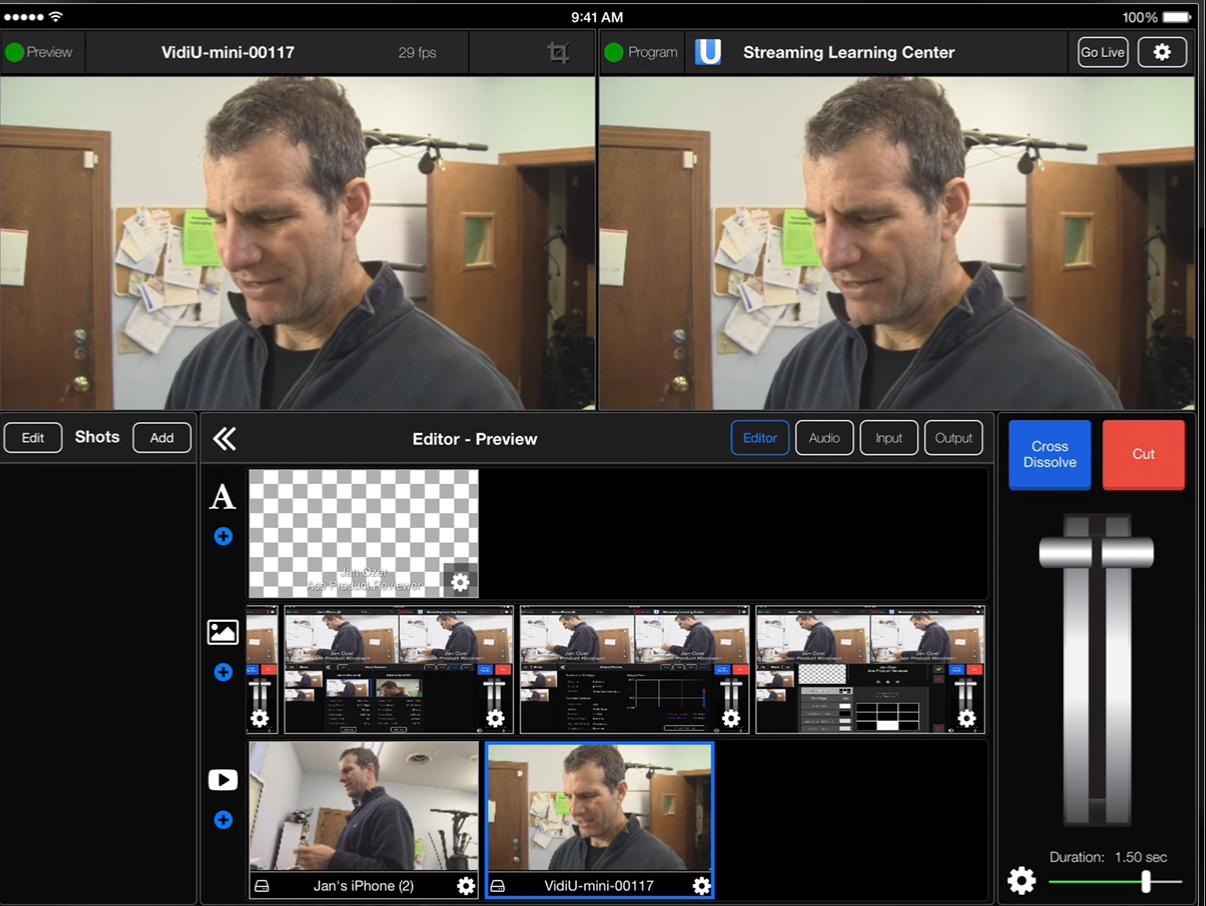Tutorial: Teradek Live:Air Video Production Suite for iOS
The Teradek Live:Air accepts multiple streams from different sources, and enables you mix an event, then send it to Livestream, Ustream, or any RTMP-compatible server, using only your iPad.
This tutorial will demonstrate the Teradek Live:Air live video switcher, which runs, as you can see in Figure 1 (below), on the iPad. The Live:Air accepts multiple streams from different sources, and enables you mix an event, then send it to Livestream, Ustream, or any RTMP-compatible server, using only your iPad.

Figure 1. Teradek Live:Air running on the iPad. Click the image to see it at full size.
A Switcher-Like UI
As you can see in Figure 1, the interface looks like a traditional video switcher. It has the preview window on the upper left, and the live or program window on the upper right. It also has three sources of content on the bottom. A, just below the preview and live/program windows, is for text. Below that, you see the little picture icon; this section is for still images, and you can see the three screenshots pictures here. On the bottom we have our two video sources.
Live:Air allows you to work with multiple video inputs from different sources. The video source on the left is a Canon Vixia camera attached to a Teradek VidiU Mini, a just-released miniature video encoding/streaming device. The other feed, on the left, is from an iPhone.
Click the Input button just below the live/program window and you’ll see settings for the two inputs that we have now (Figure 2, below).

Figure 2. Settings for our video input sources.
Adding More Sources
To add another input source or device, click the Add button just above the source settings dialog box, and you’ll find you have four choices, as shown in Figure 3 (below). We could add another iPad, even the iPad camera from this device. We could add a movie file, or we could add our RTSP feed.

Figure 3. Options for adding more input sources or devices.
Working With Text
The editor works roughly the way most editors work, right. If we wanted to add the text, we would push it into the preview window (Figure 4, below), and then we could either cut it or dissolve it in using the controls on the right.

Figure 4. Text added in the preview window. Click the image to see it at full size.
If we want to get rid of the text, we click it to move it out of the preview window, and then we can just cut it out if we want. We can control the T-bar manually, if we want, or we can just use the buttons. As you can see in Figure 5 (below), which shows the bottom of the transition panel on the right side of the Live:Air UI, the transition is configurable as to duration.

Figure 5. Set transition duration here.
You also can choose different types of transitions, including the options shown in Figure 6 (below). You can choose a zoom dissolve, or dip to black if you’re at the end of your presentation.

Figure 6. Options for different types of transitions.
If you want to show a picture, click the picture to put it into the preview window—just as with text-and then cross dissolve it in, or use another cut or transition of your choice. If you want to remove it, just click it again and hit cut, and Live:Air will return you to the camera that was there a moment ago.
Related Articles
Teradek's Link Pro Backpack offers enhanced MIMO (multiple input, multiple output) cellular connectivity, plus the reliability of bonded cellular, connected to Teradek's powerful Link WiFi Access Point, and all rolled together in a backpack powered by your choice of V-Lock or 3-stud battery.
Two leading multicam webcasting iOS apps compared